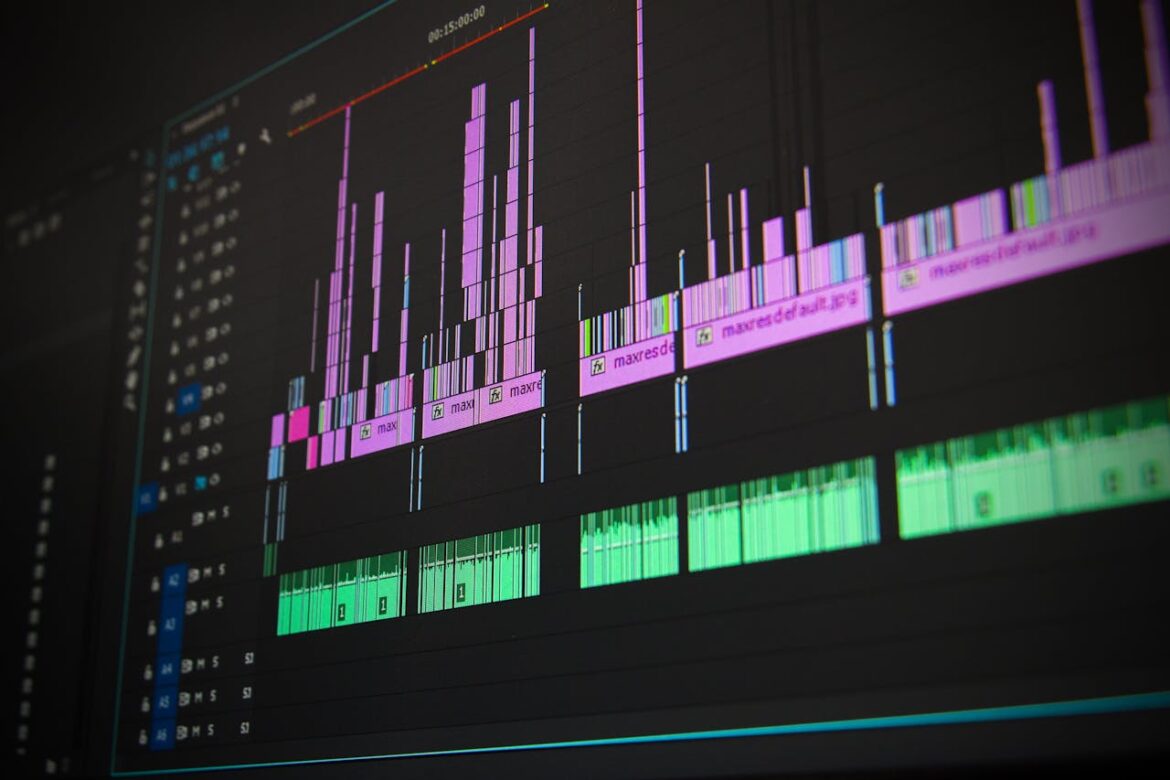Video editing has always been an essential part of digital storytelling. Whether I’m creating short clips for social media, building a presentation for work, or producing a more polished project, the editing process often takes up a significant amount of time. In recent years, AI video editing tools have emerged as a way to make that process faster, smarter, and sometimes even more creative. These tools can automate tasks like cutting, trimming, adding subtitles, or enhancing visuals, allowing me to focus on the creative vision rather than the technical grind.
When I first started experimenting with these tools, I realized that not all of them are built for the same purpose. Some excel at simplifying edits for beginners, while others provide advanced features for professional workflows. The challenge is figuring out which one fits my needs without getting lost in endless options. After spending time testing and comparing, I’ve identified several factors that matter most when deciding on the right AI video editing tool.
Ease of Use and Interface
The first thing I pay attention to in any AI editing tool is how easy it is to use. A complicated interface slows me down, no matter how powerful the features are. If I’m working on a quick project, I want something intuitive where I can drag and drop clips, apply effects, and let the AI handle repetitive tasks automatically.
Some tools have guided workflows, which walk me through step by step, while others are more open-ended and expect me to know what I’m doing. For beginners or casual editors, a clean and simple interface makes a huge difference. On the other hand, if I’m aiming for professional-grade results, I don’t mind spending more time learning the tool if it offers more flexibility.
Automation Features
One of the biggest advantages of AI in editing is automation. I’ve used tools that can automatically cut silence out of interviews, sync music with transitions, or generate subtitles instantly. These features save hours of manual work and let me focus on storytelling.
For example, when I’m editing social media clips, I find auto-captioning invaluable. It not only makes content more accessible but also increases engagement. Automatic scene detection is another feature I appreciate because it helps break longer videos into manageable segments. The key for me is to look for tools that automate tasks I personally find tedious while still giving me control to fine-tune the final result.
Compatibility and Integration
Another factor I always consider is how well the tool integrates into my existing workflow. If I’m already using platforms like Adobe Premiere Pro or Final Cut Pro, I want a tool that works alongside them instead of forcing me to start from scratch. Some AI editors are standalone applications, while others are plugins or web-based platforms.
For cloud-based editing, compatibility with file formats and storage services becomes even more important. I’ve found that seamless integration with tools like Google Drive or Dropbox makes it easier to manage large projects. If I’m collaborating with others, the ability to share projects and edits in real-time is also a deciding factor.
Editing Speed and Performance
Performance is critical when working with high-resolution videos. I’ve tried some AI editing tools that lagged or crashed during heavy edits, and it made the process frustrating. The right tool should not only provide smart automation but also handle large files smoothly.
Cloud-based editors sometimes take longer to process, depending on my internet connection. Local applications, while faster in some cases, require powerful hardware. I’ve learned to match the tool with my needs: if I’m editing short clips, a lightweight tool is fine, but for longer or high-quality productions, performance becomes a dealbreaker.
Output Quality
At the end of the day, the output quality is what matters most. I want my videos to look professional, even if I didn’t spend hours fine-tuning every detail. AI tools vary in how polished the results look, especially when it comes to color correction, transitions, and audio adjustments.
Some tools apply effects automatically, which can look impressive but may not always match my creative vision. That’s why I prefer tools that let me adjust the results. Features like automatic stabilization or smart cropping are useful, but I always check if the tool allows me to override the AI when I need more control.
Customization and Flexibility
While automation is helpful, I don’t always want a one-size-fits-all result. Flexibility is important because every project has different needs. Some AI tools offer templates that make editing fast, but if all videos end up looking the same, they lose their uniqueness.
I’ve noticed that the best tools strike a balance between automation and customization. They provide quick templates for speed but also allow me to dig deeper when I want to add a personal touch. For example, being able to adjust fonts, transitions, or background music ensures the video reflects my style rather than a generic template.
Cost and Free Options
Price is always a consideration. Many AI video editing tools have free tiers with limited features, while paid versions unlock advanced options. I often start with the free version to see if the tool fits my workflow before committing to a subscription.
Some free tools are surprisingly powerful, offering features like automatic captions, trimming, and basic effects. However, for more advanced tasks like multi-track editing or higher resolution exports, the paid plans usually become necessary. When comparing options, I look at the cost versus the time saved. If a tool cuts hours of editing into minutes, the subscription often pays for itself.
Collaboration Features
Collaboration has become increasingly important, especially when I work on group projects. Certain AI editing platforms include real-time collaboration, allowing multiple people to edit the same video simultaneously. This is a game-changer compared to passing large files back and forth.
If I’m working with a remote team, cloud-based tools with collaboration features are the most practical. They allow us to give feedback, apply changes, and finalize edits much faster than traditional methods. Even when I’m editing alone, having the option to share drafts easily makes the process smoother.
Popular AI Video Editing Tools
Over time, I’ve tested a variety of AI video editing tools, and each one stands out for different reasons.
Pictory
Pictory is a tool I use when I want to turn text into video quickly. By feeding it a script or article, it generates a video complete with visuals, subtitles, and background music. I find it especially useful for content marketing or repurposing blog posts into engaging clips.
Wisecut
Wisecut is great for editing interviews or podcasts. It automatically removes silences, generates subtitles, and syncs music with cuts. I like it because it saves hours of manual trimming and polishing, making long-form content more digestible.
Descript
Descript has become one of my favorite editing platforms because of its transcript-based editing. Instead of working directly with the timeline, I can edit the video by editing text. It feels intuitive, and the AI-driven features like overdubbing make it stand out.
Magisto
Magisto simplifies the editing process by using AI to select highlights, apply transitions, and generate a finished video. While it doesn’t offer as much control as other tools, it’s ideal when I need something quick and polished.
Runway
Runway is a more advanced tool with creative AI features like background removal, style transfer, and motion tracking. I use it when I want to experiment with more artistic or experimental videos. It feels like a glimpse into the future of editing.
Deciding Based on Needs
What I’ve realized is that the “best” AI video editing tool depends heavily on what I need at the moment. If I’m creating fast social media clips, I prefer lightweight tools with automation. For more detailed projects, I lean toward platforms that allow customization and manual adjustments. When collaboration is involved, cloud-based editors become essential.
I don’t expect one tool to cover every scenario, so I’ve built a small toolkit of different editors. This way, I can switch depending on the project, whether it’s a quick clip, a professional presentation, or an experimental piece.
Common Pitfalls to Avoid
In my experience, the biggest mistake is relying too much on automation. AI is powerful, but it doesn’t always understand context or creativity. Sometimes the automatic edits feel robotic or mismatched. I’ve learned to always review and tweak the output to ensure it aligns with my vision.
Another pitfall is overlooking compatibility. I once spent hours editing on a tool only to realize it couldn’t export in the resolution I needed. Now, I always check the export formats and quality before committing to a platform.
The Future of AI Video Editing
The pace at which these tools are evolving is exciting. I imagine future editors will go beyond automating simple cuts and captions. They might help with storytelling by suggesting structures, identifying key moments, or even generating entire visual sequences from rough ideas.
I also see collaboration becoming more seamless, with teams working across different time zones as if they were in the same room. For individual creators like me, the promise of smarter tools means more time spent on creativity and less on repetitive tasks.
Final Thoughts
Choosing the right AI video editing tool is about more than just features. It’s about matching the tool to my workflow, creative style, and project needs. I’ve learned that what works for one person might not work for another, and that’s perfectly fine. The key is to experiment, test different platforms, and figure out which ones save time while still letting creativity shine.
For me, the best results come when I treat AI as a partner rather than a replacement. These tools give me speed, efficiency, and even inspiration, but the vision and storytelling remain in my hands. As AI video editing continues to evolve, I feel more empowered than ever to bring ideas to life in ways that once seemed impossible.

